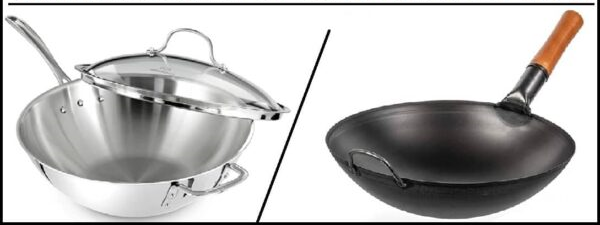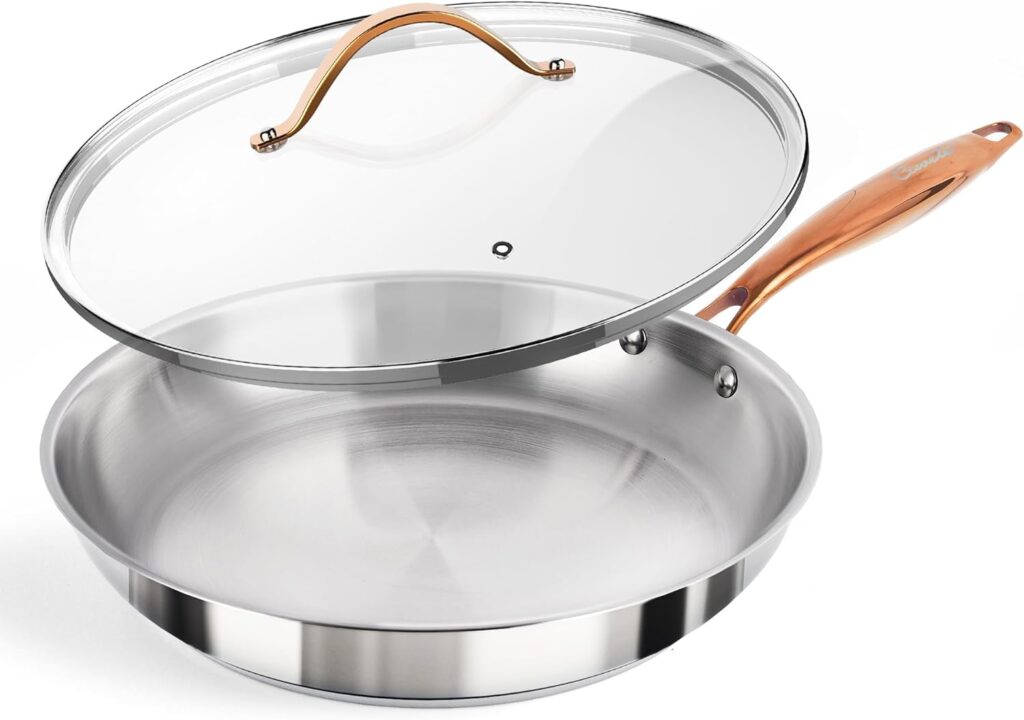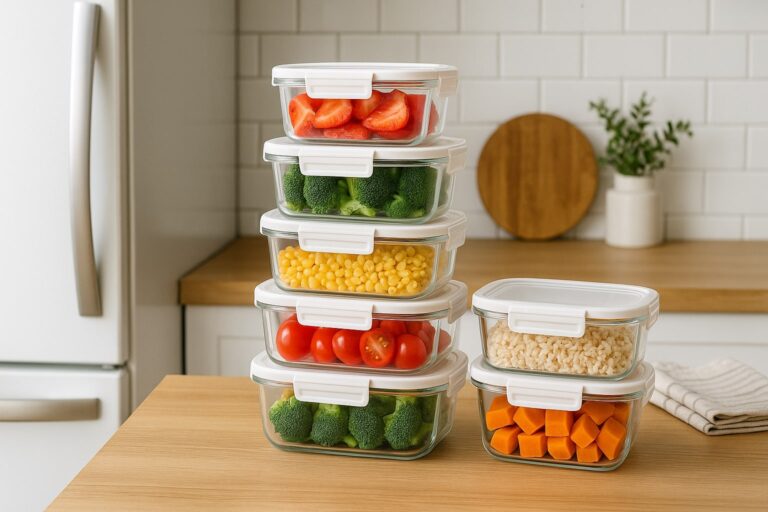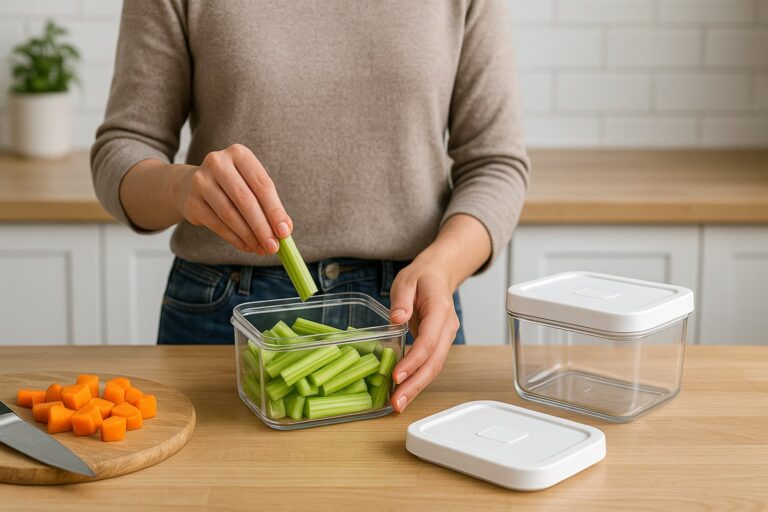Days when your plate is filled with colorful food to eat are always the best. Good food is our craving, after all. So, foodie, happy World Food Day! Bring a resolution on World Food Day to reduce food waste. Choose healthy food options, and donate to a local food bank. Today, we have come up with another expected resolution regarding cookware for you: choosing between stainless steel and carbon steel pans, which one to consider, and why.
Let’s take a look at which option is better and which one to use in your kitchen. Selecting the right cookware is as essential as choosing healthy ingredients. Here we will discuss the difference between carbon steel vs stainless steel pans. Both are widely used around the globe and have their uses and benefits.
What are carbon steel pans good for?
Carbon steel is a mixture of iron (99%) and carbon (1%). The surface of the carbon steel pan heats evenly and quickly. Being an alloy, this combination is ideal for professional chefs as it helps them maintain and control the temperature without worrying about possible damage to the pan.
A carbon steel pan is versatile and can be used for multiple cooking purposes in the kitchen. It can be easily adapted to every cooking method. The best carbon steel pan is lightweight, easy to carry, and maneuver. Also, they can keep your food warm when you are busy cooking other side dishes.
Pros:
Let’s have a look at the advantages of using a carbon steel pan.
✅ Unlike stainless steel, they can bear high temperatures.
✅ As they can retain heat, they are ideal for grilling food.
✅ They are economical and require relatively less fat for cooking.
✅ It is oven-safe.
Cons:
Below are the disadvantages of using a carbon steel pan;
❌ They are not ideal for use with food that contains acidic ingredients.
❌ The heating surface of the Carbon steel pan is not as uniform as that of a stainless steel pan.
❌ To protect them from rust, you need to oil, wash, and dry them regularly.
❌ They are not dishwasher safe, so you have to scrub them manually.
What is Carbon Steel Pan Good for?
French chefs use Carbon steel pans to make crepes or omelets. Whereas, the Chinese prefer to stir-fry things in carbon steel pans. They are best for:
- Stir-frying vegetables, chicken, noodles, and fish
- Searing meat
- Braising soups, stews, pot roast, beef bourguignon, or beef brisket
- Baking cakes, bread, pies, and more
- Cooktop cooking anything, including meats, veggies, eggs, etc
Tips for Cooking in a Carbon Steel Pan:
Like any other cookware, certain precautions can make your carbon steel pan more durable. Let’s examine a few valuable tips to keep your pan safe and extend its lifespan.
-
-
- Avoid making recipes that contain a good amount of wine, vinegar, or tomatoes.
- To preserve your carbon steel pan for future use, it is best to oil it before wrapping.
-
Pros:
✅ Lightweight
✅ Easy to move and carry
✅ Chef’s choice
✅ Requires low maintenance
Cons:
❌ Not dishwasher safe
❌ Be careful while dealing with acidic ingredients like tomatoes; they may discolor the pan
What is a Stainless Steel Pan?
A stainless steel pan is made up of chromium, nickel, molybdenum, and nitrogen. The basic material that keeps it less likely to tarnish, oxidize, or stain is chromium. All these materials together make this pan more durable and less prone to damage.
Just like a carbon steel pan, a stainless steel pan also heats food evenly. If you prefer a non-stick coating, stainless steel is not for you. They are prone to stains as food can easily stick on the surface. However, they are non-toxic, durable, and long-lasting.
Pros:
The following are the notable advantages of using a stainless steel pan.
✅ The primary advantage of stainless steel pans is that they are rust-resistant.
✅ They look aesthetically pleasing as compared to carbon steel pans.
✅ You can clean it in your dishwasher.
✅ Above all, they are low maintenance and do not require any seasoning.
Cons:
Here, we have listed some disadvantages of using a stainless steel pan.
❌ Preventing the food from sticking to the base of the pan is an art when it comes to stainless steel.
❌ In case of damage or extreme scratches, the metal leaches might dominate the taste of your food.
❌ Talking about heat conductors, they are not a good choice.
❌ Compared to Carbon steel, stainless steel cookware is quite heavy.
Things to Remember While Cooking in a Stainless Steel Pan:
Stainless steel requires low maintenance. Still, a few considerations can increase the life of your stainless steel pan. Let’s explore what you should remember while cooking in these pans.
-
-
- Never let the stainless steel pan sit empty for too long on the burner
- Please do not use it for the grill or in the microwave
- Do not use cooking sprays
- Do not use a knife to cut anything in the pan
- Do not use caustic cleaners to clean the pan
- Overly abrasive scrubs are harmful to stainless steel pans
- Never put it in your dishwasher.
Pros:
✅ It provides excellent heat retention
✅ Oven and boiler safe
✅ Non-reactive
✅ Easy to maintain
✅ Durable -
- Cons:
- ❌ Food can stick to the base.
- ❌ Heavy.
-
Carbon Steel Vs. Stainless Steel Frying Pan: What’s the Difference?
In comparison to stainless steel pans, carbon steel pans exhibit better heat conductivity. If you want to purchase stainless steel anyway, look for the ones coated in aluminum or copper.
Moreover, carbon steel pans typically come with a well-seasoned surface, unlike stainless steel. A lack of well-seasoned surface makes stainless steel pans more likely to stick food to the surface.
The downside of carbon steel is that it tends to fade over time and requires seasoning to regain its shiny appearance.
Stainless steel maintains its shiny surface for years, even after scratches.
When to Use Carbon Steel Vs Stainless Steel Pan:
Carbon steel pans have a non-stick surface and can withstand high temperatures. You can prepare various dishes using them, including steak, fish, chicken, eggs, etc. On the contrary, stainless steel pans are ideal for braised dishes and sautéing. You must be cautious about the temperature when cooking in a stainless steel pan, as it can cause the food to stick to the surface if overheated.
Which one you find better depends on your personal preferences and usability. If you’re looking for a lightweight, easy-to-move pan, carbon steel is a good option. However, stainless steel is best if you desire a pan that does not react to acidic ingredients.
Frequently Asked Questions
🙋1: Is carbon steel better than stainless steel?
📝! Carbon steel is the first choice of chefs as it conducts heat fast. However, if you are looking for low-maintenance, rust-free cookware, stainless steel is the superior choice.
🙋2: Is Carbon steel safer than stainless steel?
📝! Suppose talking about being less prone to sticking food. Yes, carbon steel is a safer option. Otherwise, both carbon and stainless steel are safe as long as they are used correctly.
🙋3: Is carbon steel cheaper than stainless steel?
📝! Yes, mostly carbon steel is cheaper than stainless steel cookware.
🙋4: Which is the best carbon steel pan?
📝! The best carbon steel pan is lightweight and naturally nonstick. Further, it should not have any additional coating. The sturdy handle and flat bottom are the crowning touches.
🙋5: When to Use Carbon Steel vs Stainless Steel Pan?
📝! Carbon steel is more durable and stronger when used with care. In comparison, stainless steel appears more aesthetically pleasing. Also, carbon steel is prone to rust, corrosion, and chemical reactions.
Summing Up
This is about comparing carbon steel vs. stainless steel pans – Which One to Consider and Why. We have included all the relevant details in the content. Stir your favorite ingredients in your preferred pan and enjoy them as a side dish on World Food Day. We hope this guide was helpful for you, and now you know which pan is better for you among the two. Do not forget to comment below about your first choice. We look forward to hearing back from you.








